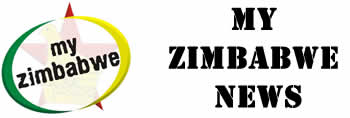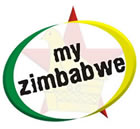The Zimbabwean economy is grappling with a new challenge as the recently launched Zimbabwe Gold (ZiG, now ZWG) currency struggles to gain traction in a market dominated by the US dollar.
Since its introduction on April 5, the ZWG has experienced a steady decline against the greenback, leading to a surge in prices for basic commodities and a growing preference for US dollar transactions.
The ZiG, Zimbabwe’s sixth attempt at a functioning local currency in 15 years, was initially pegged at 13,56 to the US dollar. However, it has since shed value, trading at a record low of 13.95 per dollar on Tuesday, according to data from the central bank’s website. This depreciation has further eroded public confidence in the ZWG, with many resorting to the US dollar as a store of value and a means of exchange.
The scarcity of ZWG notes has also forced retailers to adopt a US dollar-only pricing strategy. A snap survey conducted in Harare revealed that shops, previously displaying prices in both ZWG and US dollars, have now switched to charging exclusively in the greenback. This shift has resulted in a significant price increase, particularly for basic commodities like flour, mealie-meal, cooking oil, sugar, and rice.
For example, a 2-litre bottle of cooking oil is now going for US$5, a 10kg bag of mealie-meal (US$11), 2kg packet of sugar (US$3), 2-litre bottle of Mazoe Orange Crush (US$7), 2kg packet of rice (US$4,40) and 2kg packet of flour (US$2,80) in supermarkets. However, tuckshops have become cheaper than supermarkets, with basic commodities such as 2 litres of cooking oil going for US$3,30, 2kg sugar (US$2,50), 2kg flour (US$1,90), Mazoe Orange Crush (US$4) and 2kg rice (US$2,30), Newsday has reported.
The price hikes are particularly pronounced in large supermarkets, where retailers are seeking to insulate themselves against exchange losses arising from the widening gap between the official exchange rate and the parallel market rates. The parallel market rate has surged to ZWG26 per US dollar, compared to the official rate of ZWG14,8. In some areas such as Hwange, Nkayi, Lupane, Dete, trading is at an obscene rate of US$1:ZWG35, which has caused mayhem, with prices shooting through the roof.
The Consumer Protection Commission (CPC) has expressed concern over the sudden spike in prices, noting that the ZWG has depreciated by 30% in the parallel market over the past two weeks. The CPC is issuing compliance notices to businesses to stop charging exchange rates above the official rates.
The CPC spokesperson Kuda Mudereri said the commission had engaged relevant stakeholders so that appropriate action is taken to address the anomaly.
“During its market surveillance, the commission noted that cooking oil, whose price was ranging between US$3 and US$3,50, is now ranging between US$4,40 and US$4,80 in major retail outlets such as OK, Pick n Pay and Spar, among others,” Mudereri said.
“Our private investigations point to the fact that this might be so because these big shops want to insulate themselves against exchange losses arising from the widening gap between official exchange rate and the parallel market exchange rates, which has moved from 30% to 48%.”
According to the commission, the main challenge on the markets was that most shops were still indexing their prices in foreign currency, particularly in US dollars.
Mudereri said the commission’s market surveillance team had noted that the ZWG has depreciated in the parallel market by 30% over two weeks, moving from US$1:ZWG20 to US$1:ZWG26.
Confederation of Zimbabwe Retailers president Denford Mutashu attributes the challenges in the sector to a distorted supply chain, with suppliers demanding payment in US dollars and retailers struggling to restock with the local currency. This situation has led to a surge in informal trade, which is unregulated and enjoys zero enforcement.
“Formal retail is increasingly being replaced by informal trade, which is not only unregulated, but enjoys zero enforcement. Retailers, wholesalers and manufacturers are sitting on huge stocks of ZWG they cannot use to procure stocks.”
Economists are divided on the reasons behind the ZWG’s struggles. Chenayimoyo Mutambasere argues that the currency’s introduction was always going to be problematic, citing a lack of confidence in the economy and the reliance on outdated measures to enforce its acceptance.
“A local currency that lacks the stability of fiat money and is, instead, backed by vague policy attributes, under the guise of a structured currency, signals a lack of confidence in our economy by the policymakers themselves,” she said.
“The ZWG was essentially a response to the Treasury’s liquidity crisis, achieved by printing a new currency to settle contractor bills. Policymakers then tried to enforce its acceptance through outdated measures, such as the arrest of money changers.”
Another economist, Stevenson Dhlamini, attributes the steady rise in the price of basic commodities to “the front load pricing by retailers who are not using the official exchange rate in their pricing”.
Dhlamini said the authorities should increase efforts to liberalise the foreign exchange market to improve the price discovery mechanism for the local currency.
“The two weeks plus time lag in foreign currency allotments is disrupting supply chains and promoting the informalisation of the economy especially in the retail industry,” he said.
The Reserve Bank of Zimbabwe (RBZ) has been forced to pump $190 million into the market to support the ZiG, a Reserve Bank of Zimbabwe monetary policy committee member, Persistence Gwanyanya told Bloomberg in a Sept. 2 interview. Governor John Mushayavanhu didn’t immediately respond to a text message seeking comment.
The ZiG is the southern African nation’s sixth attempt at having a functioning local currency in 15 years. Its predecessor, the Zimbabwean dollar, was scrapped after shedding value against the greenback every single trading day this year, bringing its losses to 80%.
Dollars are now used in 60% of transactions compared with 85% when the ZiGs was adopted, with the local unit making up the balance.












